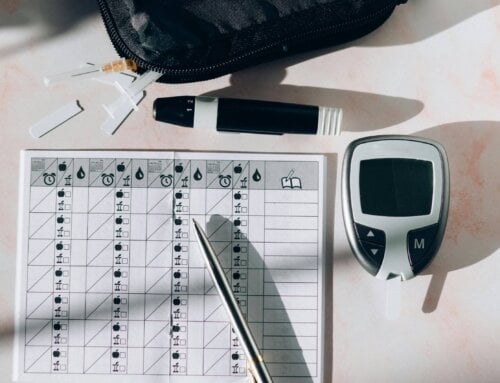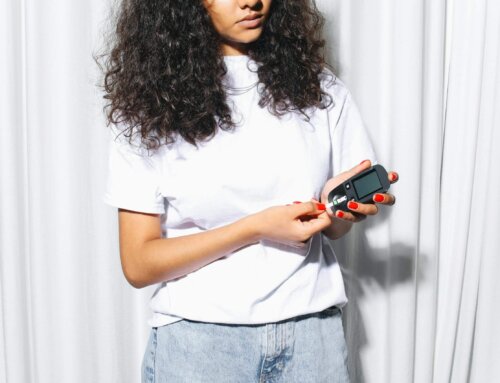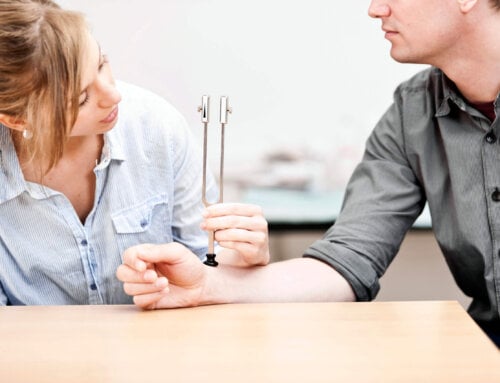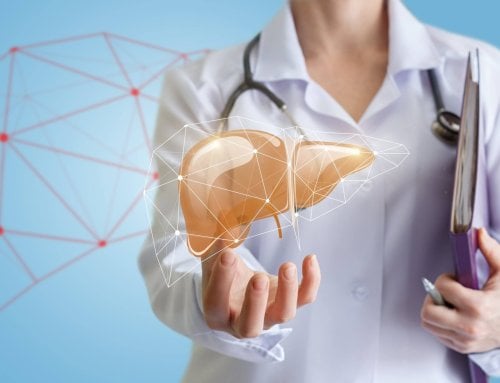Researchers at Indiana University School of Optometry and The Biocomplexity Institute at Indiana University have been actively working to recreate a “virtual tissue model of the diabetic eye”. They were able to “show precisely how a small protein can both damage and grow vessels in the eye that cause vision loss and blindness in those with diabetes”. The eventual goal is to discover improved treatments for diabetic retinopathy. Diabetic retinopathy is responsible for 1% of all blindness worldwide and accounts for the leading cause of blindness in US adults between ages 20-74. Currently 8 million Americans suffer from diabetic retinopathy. Let’s review more about the link between diabetes and the eye.
What is Diabetic Retinopathy?
Diabetic retinopathy affects small blood vessels in the retina which are found in the back of the eye. It often goes undetected unless patients get a yearly eye evaluation with dilation. Due to elevated blood sugars from diabetes, the capillaries which feed the eye are often damaged. This makes it difficult or impossible for the eye to receive proper nutrients as well as preventing waste products from leaving the surrounding tissue of the eye. The capillaries swell and destroy healthy tissue. The eye either responds by creating extra vessels which are weak and fragile or by making existing vessels leak and bleed. Uncontrolled diabetes can increase the risk of developing retinal detachment, retinopathy and macular edema. Diabetic retinopathy causes the macular region of the retina to swell and this is the most common loss of vision which develops in people with diabetes. There is no cure for retinopathy, only treatment which can preserve existing vision.
Who is Most at Risk for Diabetic Retinopathy?
Whether you have type 1, type 2 or gestational diabetes that is “out of control” with AIC levels 8% or more, the higher the risk becomes. The longer you have diabetes also is a factor.
What Are The Two Types of Diabetic Retinopathy?
There is non-proliferative and proliferative. Non-proliferative retinopathy causes pockets in the back of the eye; it can be described as mild, moderate or severe. Proliferative retinopathy is more advanced. Proliferative retinopathy is when the existing eye blood vessels become blocked and new weak vessels form. These new blood vessels can promote scar tissue, heavy bleeding in the eye and possible retinal detachment. At the beginning there are no symptoms and a complete eye exam with dilation is needed for a diagnosis.
What is the Most Important Measure for Eye Health When You Have Diabetes?
Early detection is the most important factor other than keeping your AIC 7% or under. According to The National Institutes of Health “Early detection and treatment of diabetic retinopathy can reduce the risk of blindness by 95%”. Be sure to schedule a yearly eye exam, or more frequently, as recommended by your optometrist or ophthalmologist. Elevated blood sugars limit the supply of blood and oxygen to the eyes and can cause blurry vision. The eye is not able to properly filter and remove waste which promotes eye deposits and floaters. Genetics play a significant part of developing diabetic eye disease so know your family history. Other helpful advice is to keep your cholesterol levels in check with an LDL under 70. Blood pressure control of 140/80 or less can limit eye disease as well as not smoking. As with regular diabetes care, stay active with daily exercise, keep weight at a reasonable level, eat a healthful diet and take diabetes medications as prescribed.
What About Treatments for Diabetic Retinopathy?
Anti-VEGF injection therapy includes drugs like Avastin, Lucentis and Eylea. These medications are injected by a retinal specialist into the vitreous gel of the eye to help block and reverse abnormal blood vessel growth. The treatment varies in cost, length of sessions and number of injections depending on your personal situation. Another specific treatment used is laser therapy or photocoagulation. “Small laser burns are made to the leaking blood vessels in the swollen area of the macula”. This slows fluid leakage and retinal swelling and preserves vision by getting extra oxygen to the deeper vessels. Laser therapy treatment can create blind spots and change night vision as well as periphery vision. Current treatment for diabetic retinopathy is not to reverse but to “stop the spread of cascading vascular damage”. The latest care is to look for more individualized treatment plans to prevent damage and save vision. Corticosteroids (which often raise blood sugars) may be injected or implanted into the eye to further reduce swelling. Sometimes a vitrectomy is necessary to preserve remaining vision. Vitrectomy is when the vitreous gel is removed and replaced with a gas bubble to treat severe bleeds. Emergency symptoms related to diabetic eye disease are: holes or cob webs in your vision, double or blurred vision, quick onset of multiple floaters or a large single floater, flashing lights, black spots in your vision and changes in your peripheral vision. Never second guess what is happening since time is an important factor in saving your eyes.
What About Cataracts and Diabetes?
People with diabetes are “60% more likely to develop cataracts than those without diabetes”. Cataracts occur when “the clear lens of the eye becomes cloudy and blurs vision”. Things no longer look sharp and colors lose crispness. Cataracts are more common with aging and diabetes can accelerate the aging process. Cataract levels are also higher in people with diabetes “because of swelling brought on by high blood sugars”. Sunlight is a huge factor in cataract development for anyone. Constant sun exposure causes proteins to oxidize and clump together which produces the cataract. Cataracts are surgically removed when they become “ripe”. Eventually both eyes develop cataracts if one is found.
What Can You do to Slow Down the Chances of Developing Cataracts?
Blood sugar control is again the most important factor. Other advice is to wear sunglasses daily even when cloudy or just going outside for a short time. The lenses should have UVA and UVB protection and cover the entire eye and sides for best results. The top nutritional sources for eye protection are the antioxidants lutein and zeaxanthin. Eating a variety of rich, colored fruits and vegetables is critical to eye health. These foods help absorb and detoxify damaging substances and replenish the lens of the eye with antioxidants. Include foods like carrots, corn, and mangoes, orange and yellow squash, red, orange and yellow peppers, red, yellow or orange heirloom tomatoes and sweet potatoes. Zinc is also beneficial to bolster eye health. Dark leafy greens such as parsley, bok Choy, collards, spinach and kale should be eaten. Zeaxanthin is found in honeydew melon, oranges and orange bell peppers. Egg yolks contain both lutein and zeaxanthin and are wonderful nutrient sources for the eyes. Try to avoid or reduce inflammatory foods such as red fatty meats, sweets, process or bagged foods and concentrate on anti-inflammatory foods such as salmon, sardines, mackerel, anchovies, herring and walnuts. Add anti-inflammatory spices including garlic, ginger and turmeric for improved eye function and health. Dr. Andrew Weil, the director of The Arizona Integrative Medicine Institute and an authority on preventative health, also recommends “adding vitamin C, Vitamin E mixed tocopherols and tocotrienols, beta carotene and B complex vitamins to retard cataract development”. According to Life Extension, a national vitamin company who sponsors ample scientific research suggests “supplementing with saffron to make meaningful changes in the retina and improve visual acuity”.
What About Glaucoma and Diabetes?
Glaucoma risk doubles in people with diabetes. Glaucoma is associated with a pressure increase in the eye and damages the optic nerve due to fluid build up that is not draining properly. The most common glaucoma is open angle and is often treated with eye drops. Again, the longer you have diabetes and the more it is uncontrolled, the higher the risk of developing glaucoma. The other form of glaucoma often found in people with diabetes is neovascular glaucoma. New vessels grow on the eye’s iris blocking the flow of fluid and causing higher pressures in the eye. Laser therapy may be used to relieve pressure. Eating dark greens and beets may ward off glaucoma and they contain nitrates which promote blood flow to the retina. These nitrates are different from the kinds that are found in processed meats like hot dogs or bologna.
What is Low Vision and What if You Develop It?
“Low vision is a visual impairment that can’t be corrected by standard glasses, contacts, medicine or surgery and interferes with everyday activities”. Consider rehab services to help if vision is impaired. Check with local agencies to understand what services may be offered. Find medical centers with specialized eye institutes which will be an excellent resource. Often licensed occupational therapists or certified low vision therapists come to the home and make recommendations to add safety and independence. They will help organize, suggest better lighting or recommend low vision devices which can make daily life much easier. The Hadley School for the Blind offers tips for those with low vision. You can check their website, www.Hadley.edu or call 800-323-4238. A complete home tip guide is offered by Cornell University online. Take advantage of these tips by downloading the entire pamphlet.
What Kinds of Things are Affected by Low Vision?
Having low vision can influence medication management, reading food labels, navigating steps, stairs and hallways, using kitchen or bathroom appliances and functioning safely in the kitchen. It can affect the ability of reading, sewing, and knitting, building a puzzle, playing card games or watching a favorite show.
Give me some simple tips for living with low vision.
If you have diabetes and low vision you should order a talking glucose meter. This kind of meter will audibly announce your blood sugar number after testing. Using an insulin pen that clicks with each added unit is more reassuring than drawing up insulin in a syringe. Use a dark colored cutting board with light shade foods and a light colored cutting board with dark foods. Make sure when cooking, use an electric stove, that all pan handles hang over the counter. Use the burners closer to the front of the stove at all times. Cook in the microwave as much as possible and put Velcro dots on the buttons you use most frequently. Get automatic appliances like coffee makers or crock pots to simplify life. Line up medications in a specific order with assistance and keep them that way. Get large white labels and label medications with bold black lettering. Never go to the kitchen with loose, flowing sleeves or heavy robes to prevent burns. All reading, including cookbooks, should be in large print. Have multiple lamps and light sources with different watt bulbs to offer variations in light. Place magnifiers in all rooms so you have them available immediately. Use ribbons, rubber bands and thread so you can mark different products. Ask for assistance from family, friends and professionals.
Eye conditions are common when you have diabetes but the latest technology has taken us ahead in the treatments of these problems. Eye care requires yearly monitoring by an eye professional along with keeping blood sugars controlled and living a healthful lifestyle. Do your best to keep eye health intact and prevent problems from occurring!
Have a question or comment? Post below or email me at [email protected] if you would like to share them with ADW diabetes.
NOTE: Consult your Doctor first to make sure my recommendations fit your special health needs.













Leave A Comment